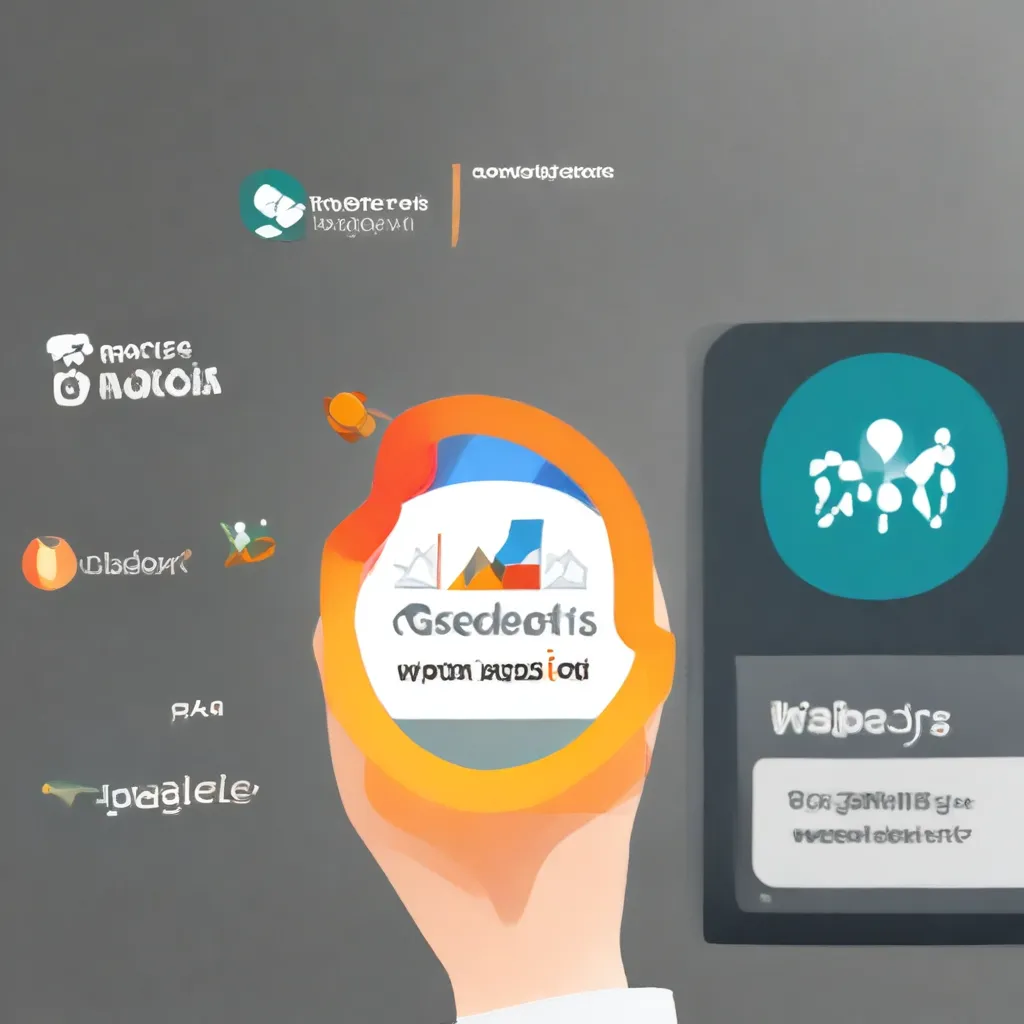
Embracing Blockchain for Secure and Transparent Supply Chain Management
In the ever-evolving landscape of technology, the impact of blockchain has been truly remarkable, particularly in the realm of supply chain management. This decentralized, distributed ledger technology offers a secure and transparent solution for tracking the movement of goods, from their origin to their final destination.
One of the key advantages of blockchain in supply chain management is its ability to provide a verifiable and immutable record of transactions. By recording every step of the supply chain on the blockchain, companies can effectively monitor the history of a product, ensuring its authenticity and traceability. This level of transparency not only helps to identify the source of any issues or contamination but also promotes sustainable and ethical practices throughout the supply chain.
Moreover, blockchain’s smart contract functionality enables the automation of various supply chain processes, such as initiating shipments, triggering payments, and verifying the quality and condition of goods. This streamlining of operations can lead to significant reductions in delays, additional costs, and human errors associated with traditional supply chain transactions.
According to Innowise’s blog, blockchain technology can also facilitate secure and efficient data exchange, enabling all participants in the supply chain to access a shared, trusted source of information. This not only enhances collaboration and real-time tracking but also allows for the quick and collaborative resolution of operational issues, including supplier information, orders, and product deliveries.
The benefits of blockchain in supply chain management extend beyond just traceability and transparency. The technology’s ability to enable instant cross-border payments and eliminate the need for intermediaries can significantly improve financial management within the supply chain. Innowise’s article highlights the potential of decentralized financial networks, such as Ripple, to facilitate faster, more secure, and cost-effective international transactions, ultimately streamlining the flow of funds throughout the supply chain.
Furthermore, blockchain’s immutable and secure nature can revolutionize the management of supply chain-related documents. By providing a tamper-proof record of document ownership, origin, and modification history, blockchain can enhance administrative procedures, reduce transit times, and ensure compliance with logistics requirements.
As the demand for transparency, traceability, and security continues to grow in the supply chain industry, blockchain has emerged as a promising solution to address these challenges. By leveraging its decentralized, immutable, and transparent ledger, this technology can create a shared, trusted network of information among all supply chain participants, enabling better collaboration, real-time tracking, and efficient management of the entire supply chain process.
Harnessing the Power of AI and No-Code Platforms in Software Development
The world of software engineering has undergone a remarkable transformation, with the rise of cutting-edge technologies and innovative approaches that are reshaping the industry. One of the most significant trends in this space is the integration of artificial intelligence (AI) and the proliferation of no-code/low-code platforms, which are revolutionizing the way software is developed, deployed, and maintained.
The AI-Driven Revolution in Software Engineering
Artificial intelligence has emerged as a game-changer in software development, permeating every aspect of the process. From automating routine tasks to enhancing code quality and predicting potential issues, AI-powered tools are streamlining the software development lifecycle.
According to the ClickUp blog, the integration of generative AI, such as ChatGPT, has introduced a new era of content creation, where developers can effortlessly generate images, text, and even code snippets based on their prompts. This revolutionary technology not only boosts productivity but also stimulates creativity, enabling software teams to explore new frontiers and deliver highly personalized digital experiences.
Moreover, the application of machine learning (ML) algorithms in software development has transformed the way teams approach tasks like code review, bug detection, and performance optimization. By leveraging the power of predictive analytics, AI-driven systems can identify and resolve issues more efficiently, reducing the time and effort required for software maintenance.
The Rise of No-Code/Low-Code Platforms
Alongside the advancements in AI, the software development landscape has also witnessed the rapid growth of no-code and low-code platforms. These innovative tools empower both technical and non-technical users to create functional applications without the need for extensive coding knowledge.
According to the ClickUp blog, no-code and low-code platforms leverage visual interfaces, drag-and-drop components, and pre-built templates to accelerate the application development process. This approach not only democratizes software creation but also enables faster time-to-market, reduced development costs, and improved collaboration between business and IT teams.
The integration of robotic process automation (RPA) with no-code/low-code platforms further enhances the efficiency of digital transformation initiatives. By automating repetitive and mundane tasks, RPA can streamline various business processes, enabling organizations to focus on more strategic and value-adding activities.
The Convergence of AI and No-Code/Low-Code
The convergence of AI and no-code/low-code platforms is a powerful synergy that is shaping the future of software development. By combining the vast capabilities of AI with the user-friendly interfaces and rapid prototyping capabilities of no-code/low-code tools, software teams can create innovative and highly customized applications at an unprecedented pace.
The ClickUp blog highlights how AI-powered features, such as automated code generation, intelligent workflow design, and predictive analytics, can be seamlessly integrated into no-code/low-code platforms. This convergence empowers both technical and non-technical users to collaborate effectively, streamline development processes, and deliver exceptional software solutions that cater to evolving market demands.
As the software development industry continues to evolve, the synergistic relationship between AI and no-code/low-code platforms will likely play a pivotal role in driving greater efficiency, agility, and innovation in the creation and deployment of cutting-edge digital products and services.
Embracing the Future of Cloud Computing and Edge Technologies
In the rapidly evolving landscape of software development, the rise of cloud computing and edge technologies has been a game-changer, revolutionizing the way applications are designed, deployed, and maintained.
The Dominance of Cloud Computing
Cloud computing has firmly established itself as a cornerstone of modern software engineering, offering unprecedented scalability, flexibility, and cost-efficiency. According to the ClickUp blog, the global cloud computing market is expected to reach a staggering $1.2664 trillion by 2028, underscoring the industry’s relentless growth and the widespread adoption of cloud-based solutions.
The advantages of cloud computing are manifold. By leveraging the vast resources and on-demand scalability of cloud platforms, software teams can quickly experiment, prototype, and deploy applications without the burden of managing underlying infrastructure. This agility and scalability enable organizations to respond more effectively to changing market demands and customer preferences.
Furthermore, the integration of cloud computing with emerging technologies, such as AI and machine learning, has unlocked new possibilities for software development. Cloud-based AI services and serverless computing models empower developers to harness the power of advanced analytics and automation, driving greater efficiency and innovation in their products.
The Rise of Edge Computing
Alongside the dominance of cloud computing, the emergence of edge computing has significantly impacted the software development landscape. Edge computing refers to the processing and analysis of data at the „edge” of the network, closer to the source of data generation, rather than in centralized cloud hubs.
The ClickUp blog highlights the growing importance of edge computing, particularly in the context of IoT (Internet of Things) applications. By processing data locally, edge computing reduces latency, improves responsiveness, and enhances the overall performance of IoT systems. This is especially crucial in scenarios where real-time decision-making is paramount, such as in industrial automation, autonomous vehicles, and smart city applications.
The convergence of cloud and edge computing has given rise to a hybrid and multi-cloud approach, where software teams can leverage the best of both worlds. This flexibility allows organizations to optimize their infrastructure and workloads, ensuring that mission-critical applications benefit from the low latency and autonomous decision-making capabilities of edge computing, while less time-sensitive tasks can be offloaded to the scalable resources of the cloud.
The Evolving Landscape of Software Architecture
As cloud and edge technologies continue to shape the software development landscape, the industry has also witnessed a shift towards more modular, service-oriented architectural patterns. According to the ClickUp blog, the adoption of microservices and event-driven architectures has become increasingly prevalent, enabling software teams to build highly scalable, resilient, and adaptable applications.
These architectural approaches, combined with the capabilities of cloud and edge computing, empower developers to create software that is not only more efficient and reliable but also more responsive to changing user requirements and market dynamics. By breaking down applications into smaller, independent services, teams can iterate and deploy updates more quickly, ultimately delivering better user experiences and staying ahead of the competition.
As the software development industry continues to evolve, the interplay between cloud computing, edge technologies, and modern architectural patterns will play a pivotal role in shaping the future of digital transformation, enabling organizations to harness the full potential of their software assets and stay at the forefront of innovation.
Revolutionizing User Experiences with Cutting-Edge UI/UX Trends
In the ever-evolving world of software development, the importance of user interface (UI) and user experience (UX) design cannot be overstated. As digital products and services become increasingly ubiquitous, the quality of the user experience has become a critical differentiator, determining the success and adoption of software solutions.
Embracing Microinteractions for Enhanced Engagement
One of the prominent trends in UI/UX design is the rise of microinteractions – subtle, yet impactful, user interface elements that enhance the overall experience. According to the ClickUp blog, microinteractions, such as progress bars, celebratory GIFs, hover effects, and subtle animations, can significantly improve usability, increase engagement, and create a more intuitive and delightful user interface.
As software products strive to stand out in a crowded market, attention to detail and seamless microinteractions have become essential. By incorporating these design elements, software teams can create a more polished and engaging user experience, ultimately driving higher user satisfaction and increased retention.
Embracing Voice User Interfaces (VUI) and Conversational Experiences
The rapid advancements in natural language processing (NLP) and artificial intelligence have paved the way for the widespread adoption of voice user interfaces (VUI) and conversational experiences. As mentioned in the ClickUp blog, the integration of VUI technology, powered by AI-driven virtual assistants like Alexa and Siri, has transformed the way users interact with digital products.
These conversational interfaces offer a more natural and intuitive interaction model, allowing users to access information, control smart devices, and perform tasks through voice commands. As the underlying technologies continue to evolve, VUI-powered experiences are expected to become increasingly accurate, contextual, and seamlessly integrated into our daily digital lives.
Software teams that embrace VUI and conversational design principles can create engaging and accessible user experiences, catering to the growing demand for hands-free, voice-driven interactions.
Leveraging 3D and Immersive Experiences
Another prominent trend in UI/UX design is the integration of 3D and immersive elements, which can enhance the overall user experience and create a more engaging digital environment. As noted in the ClickUp blog, the advancements in hardware capabilities and the widespread adoption of augmented reality (AR) and virtual reality (VR) technologies have opened up new frontiers for software designers.
By incorporating 3D visuals, interactive elements, and even virtual reality experiences, software teams can create more captivating and memorable user interfaces. These immersive experiences can be particularly impactful in industries such as gaming, e-commerce, and industrial applications, where they can help users visualize products, navigate environments, and interact with digital content in more intuitive and engaging ways.
As the hardware and software supporting 3D and immersive technologies continue to evolve, software developers and designers will have an ever-expanding toolkit to create visually stunning and highly interactive user experiences that captivate and delight their target audiences.
Prioritizing Accessibility and Inclusive Design
In the pursuit of exceptional user experiences, software teams must also prioritize accessibility and inclusive design principles. By ensuring that their digital products are usable and accessible to users with diverse abilities, organizations can foster a more inclusive and equitable digital landscape.
As highlighted in the ClickUp blog, accessibility considerations should be integrated throughout the entire software development lifecycle, from the initial design phase to the final deployment. This includes adhering to recognized accessibility standards, incorporating features like screen readers, high-contrast modes, and keyboard navigation, and conducting regular user testing to identify and address any accessibility gaps.
By embracing inclusive design practices, software teams can create digital experiences that are truly accessible and welcoming to users of all abilities, ultimately contributing to a more inclusive and equitable digital ecosystem.
Conclusion: Embracing the Future of Software Development
The software development landscape is undergoing a remarkable transformation, driven by the convergence of cutting-edge technologies, innovative approaches, and evolving user demands. From the transformative potential of blockchain in supply chain management to the game-changing integration of AI and no-code/low-code platforms, the industry is witnessing a surge of advancements that are redefining the way software is conceived, created, and experienced.
As we look ahead, the continued dominance of cloud computing, the rise of edge technologies, and the evolving landscape of software architecture will undoubtedly shape the future of digital transformation, empowering organizations to harness the full potential of their software assets and stay at the forefront of innovation.
Moreover, the UI/UX revolution, marked by the embrace of microinteractions, voice-driven interfaces, and immersive experiences, underscores the importance of delivering exceptional user experiences that captivate and engage audiences in meaningful ways.
By staying attuned to these cutting-edge trends and harnessing the power of these transformative technologies, software development teams can create innovative, secure, and user-centric digital solutions that drive business growth, enhance customer satisfaction, and ultimately shape the future of the digital landscape.
To learn more about how https://stronyinternetowe.uk/ can help you leverage these trends and stay ahead of the curve in software development, explore our comprehensive services and industry-leading expertise.




